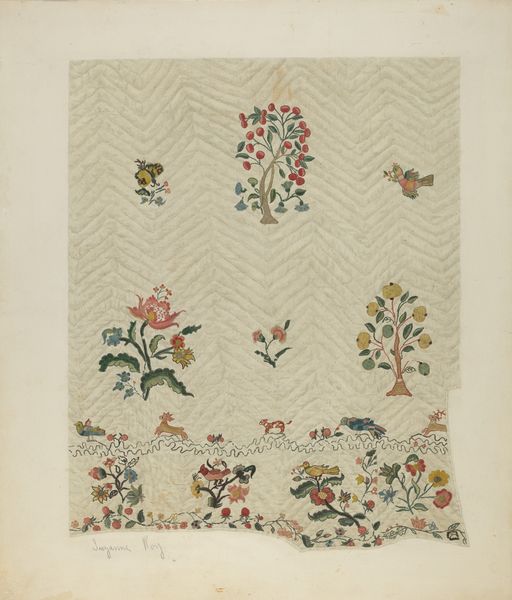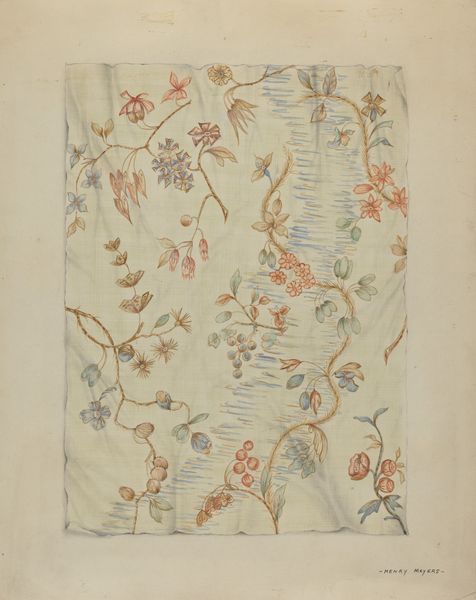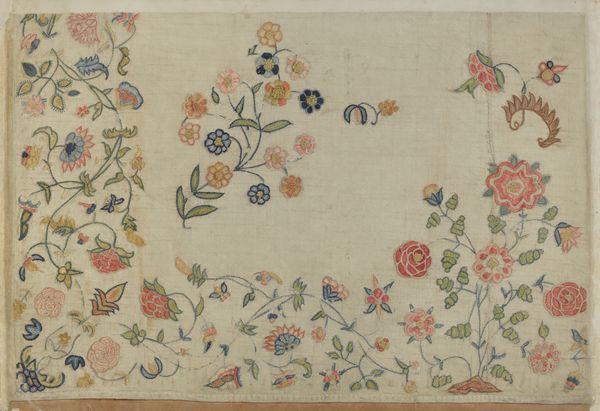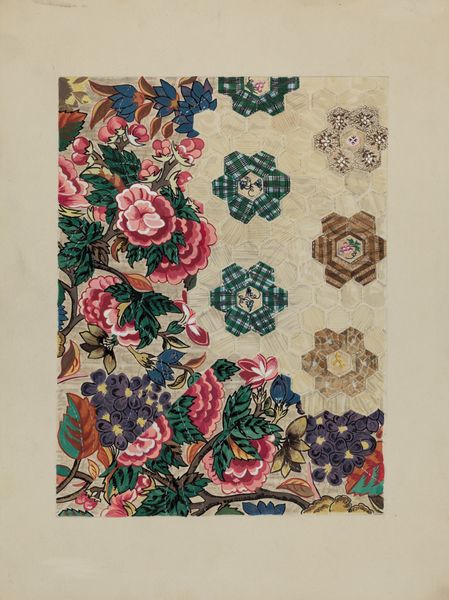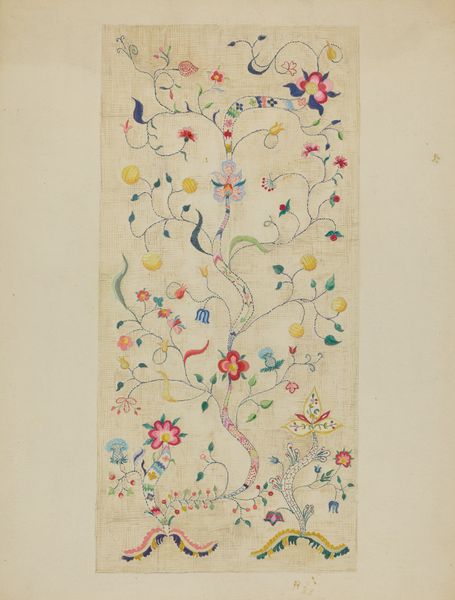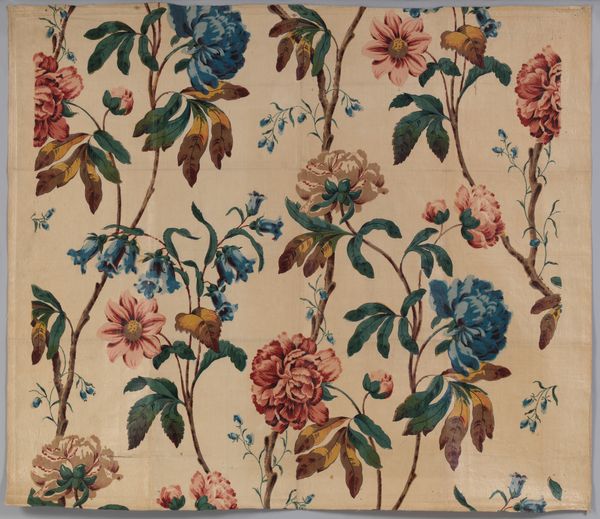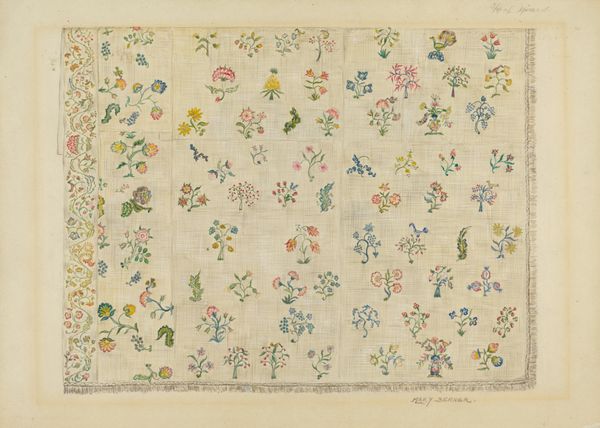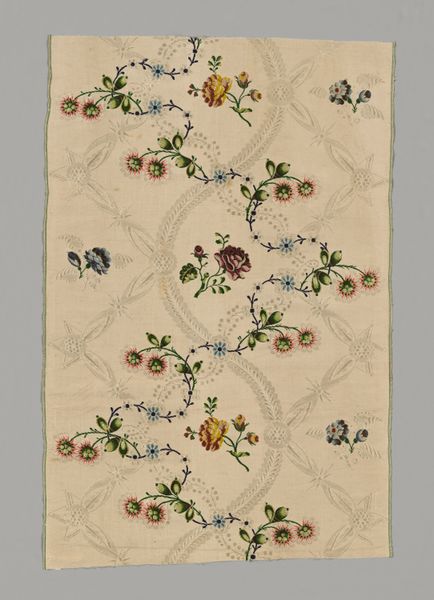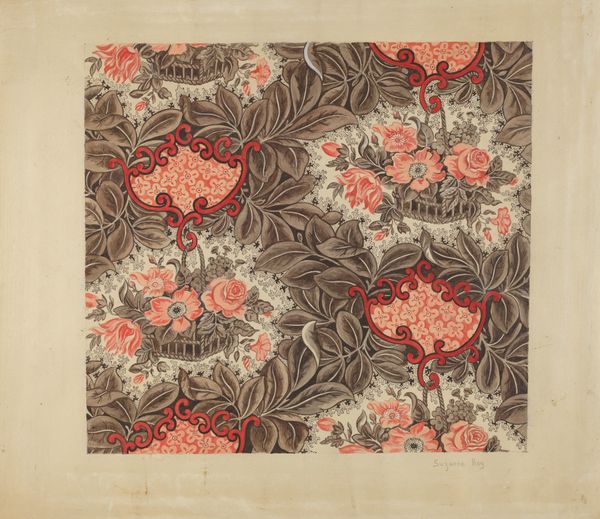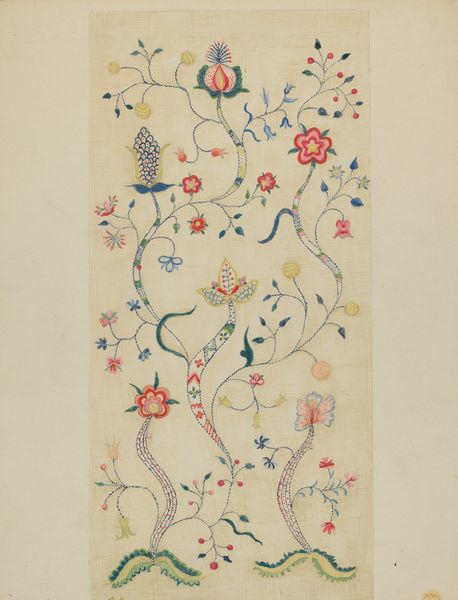
drawing, watercolor
#
drawing
#
watercolor
#
watercolour illustration
#
watercolor
Dimensions: overall: 30.1 x 23 cm (11 7/8 x 9 1/16 in.)
Copyright: National Gallery of Art: CC0 1.0
Editor: Here we have Mary Berner's "Bedspread" from around 1936, a drawing and watercolor piece. I find it so charming and delicate. It looks like a pattern for embroidery, maybe? What do you make of it? Curator: Charm is a great word for it, and you're right, there's definitely a naive sweetness to the way these floral motifs are rendered. It's like a garden seen through a child's eyes. I see a certain yearning in this work, a dream of domestic tranquility perhaps, a simple comfort expressed through those colourful flower. Don't you feel that way, too? Editor: Absolutely. There's also this sense of meticulousness. Each square is carefully filled, almost like a sampler. Was it common at the time for artists to design their own bedspreads like this? Curator: Design, embellishment and care in rendering the flora: yes and no. Embroidery samplers were a very traditional pastime for women of this era, of this social status: each element carefully executed and meant to demonstrate knowledge of patterns. The "signature" lies within her palette and selection and execution of favorite colours of flora. The flowers are not hyperrealistic but still suggest care and rendering. Editor: Interesting. So it's not necessarily about pure invention, but about interpretation and personal touch? Curator: Precisely. It makes me think about how even within structured formats, creativity can bloom. What do you think its enduring appeal would be, for our visitors today? Editor: Well, it's just so cheerful and unpretentious. In a world that often feels complicated, these simple flowers offer a little bit of uncomplicated joy. Curator: I agree entirely. It’s a humble offering of beauty, like a quiet, enduring whisper of hope. This was such a breath of fresh air, thank you for that perspective.
Comments
No comments
Be the first to comment and join the conversation on the ultimate creative platform.
